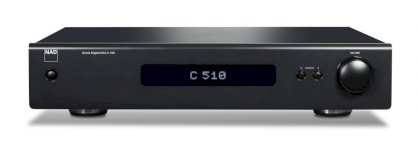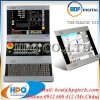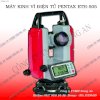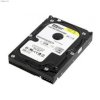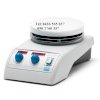Mô tả sản phẩm: NAD C 510 Direct Digital Preamp DAC
Digital Connectivity: The C 510 includes connectivity for a wide variety of digital sources.
USB Type-B Port: A USB Type-B port is used for direct connection to your Windows (XP SP2 or 7) PC or Mac (10.6 or later) computer. This port operates in asynchronous mode, meaning that the C 510 provides the precision clock for the USB data rather than the often imprecise clock in the computer; plus it supports sampling rates of up to 192kHz and 24-bit depth. In order to stream your computer audio via the C 510, the "NAD USB Audio driver" must be downloaded from the NAD website.
Dual HDMI Inputs: Two HDMI inputs with a video pass through provide a secure encrypted path for High Res Audio, and allow the C 510 to perform a limited role as a video switcher. The 2-channel PCM audio track that is present on all video programming is stripped from the unit's HDMI output with the video passing untouched to a connected video display. The stripped 2-channel PCM signal is output at the Preamp/DAC's analog outputs; there is no multichannel or surround decoding.
3 SPDIF Inputs: Also included are three SPDIF digital inputs which are all 24-bit/192kHz capable. An optical (toslink), coaxial (RCA) and AES/EBU (XLR) input make up the three SPIDF digital inputs.
Note: A particular source input can be renamed according to your preference. You can use up to 16 characters in renaming a source input. Below is the procedure on how to rename a source input. There are no analog inputs.
Balanced & Unbalanced Analog Outputs: The NAD C 510 Direct Digital Preamp/DAC is fitted with balanced XLR and unbalanced RCA analog outputs. The Preamp/DAC's analog output section is driven by a Class A biased operation amplifier for the very best performance and reliability.
Optimized Power Supply & Circuitry: NAD has taken special care designing the power supply and critical circuit layout to optimize the performance of the premium parts used extensively throughout the C 510.
Digital Volume Control: Because the volume level is controlled by mathematics in the digital domain, there is no mechanical or electrical imprecision; all volume levels have exactly the same circuit conditions. The unit's volume control can be set to "Fixed" or "Variable".
Remote Control: The control interface of the NAD C 510 couldn't be simpler with Power, Input Selection, and Volume Control on both the front-panel and the supplied IR remote. 12V triggers, an IR input, and a RS-232 port allow for system automation interface.
+12V Trigger Input: With this 3.5mm input triggered by a 12V DC supply, the C 510 can be switched On remotely from standby mode by compatible devices such as amplifiers, preamplifiers, receivers, etc. If the 12V DC supply is cut off, the C 510 will return to standby mode.
+12V Trigger Output: The +12V Trigger Output (3.5mm) is used for controlling external equipment that is equipped with a +12V trigger input. This output will be 12V when the C 510 is On and 0V when the unit is either Off or in standby mode.
IR Input: This 3.5mm input is connected to the output of an IR (infrared) repeater (Xantech or similar) or the IR output of another component to allow control of the C 510 from a remote location.
RS-232 Port: NAD is a certified partner of AMX and Crestron and fully supports these external devices via its RS-232 serial port.. Check out the NAD website for information about AMX and Crestron compatibility with NAD.
Front-Panel Display: Selected input and incoming sample rate are displayed on the Preamp/DAC's front-panel display. Auto Display gives the use the option to turn off the Vacuum Fluorescent Display after 15 minutes of no user interaction and no remote control command.
Auto Standby: The C 510 can be set to go to standby mode automatically if there is no user interface interaction and no active source within 30 minutes.
